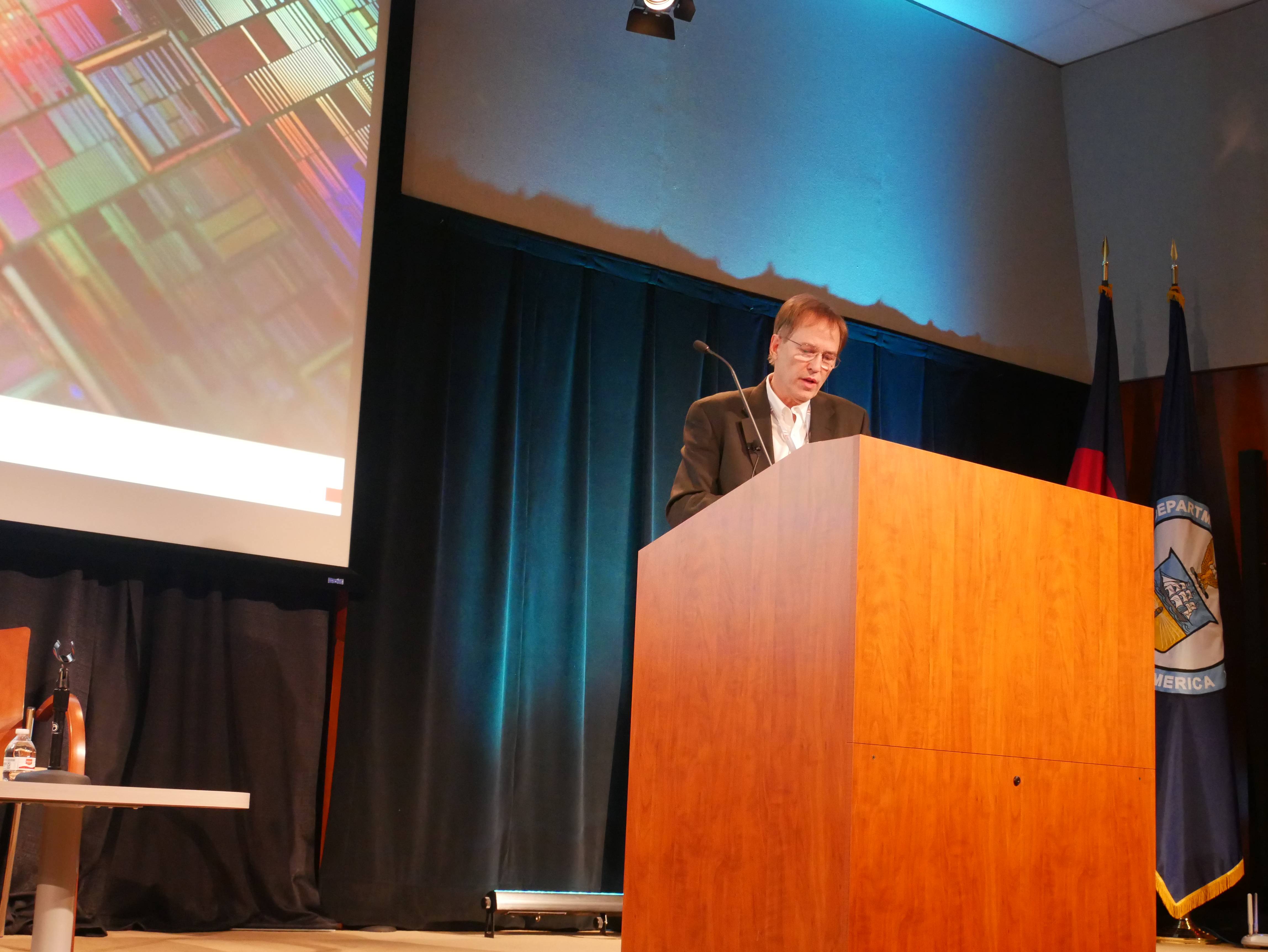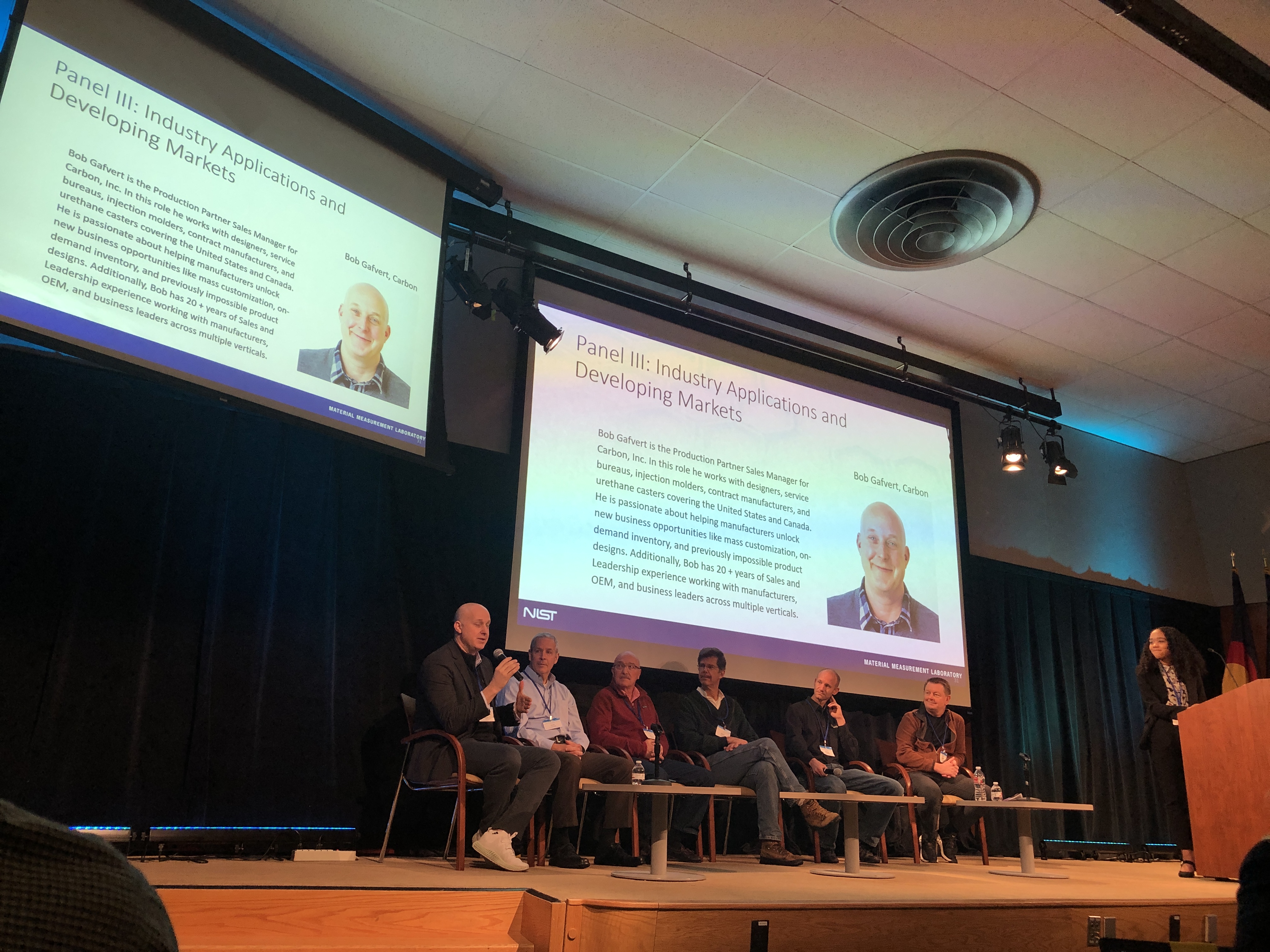Last week, the National Institute of Standards and Technology (NIST) and RadTech, hosted the first Photopolymer Additive Manufacturing Workshop (PAM) 2019, in Boulder, Colorado. 3D Printing Industry was among the estimated 100 attendees present from October 29 through 30, who fought through the sudden snowstorm to discuss the topic:“Roadmapping a Future for Stereolithography, Inkjet, and Beyond.”
More specifically, PAM 2019 consisted of 21% resin suppliers, 14% OEMs, 22% academic institute members, 15% representing Government Research Agencies, 5% Government Regulatory Agencies, and 23% end-users. In the opening remarks, Dr. Frank Gayle, Deputy Director of the Office of Advanced Manufacturing at NIST stated:
“70 million jobs have been made obsolete due to automation and new technologies. However, 130 million jobs gave been birthed as a result of additive manufacturing. Addressing the skills gap as well as other limitations of PAM will only prosper the burgeoning technology which is seen in industries such as defense and energy, automotive, and healthcare.”

NIST, Manufacturing USA, and PAM
Founded on the premise of increasing U.S. industrial competitiveness, NIST is the oldest physical science laboratory in the U.S.. As part of the institute’s recent research, a very-high-resolution scanning probe was utilized to measure the exact moment when material cures in an SLA 3D printer, thus optimizing material properties in a part.
The newly established, open-format, PAM workshop featured six stakeholders representing each of the categories present. These leaders derived from institutes including the Berkeley Center for Green Chemistry, Sartomer, Formlabs, the Consumer Product Safety Commission (CPSC), Ford, and NIST.
“NIST supports standards development but does not set them,” added Dr. Gayle. “Particularly through the ventures from the Manufacturing USA program, there have been improvements in understanding the practical uses of additive manufacturing, advances in materials, and polymers as applied to lightweight design challenges, as well as the practical uses of polymer characterization methods and structure-property relationships.”

Can PAM replace injection molding?
Of the five panels at PAM 2019, some of the weaknesses identified from SLA, and Inkjet technologies included part sustainability and scalability. Nonetheless, during Panel III: Industry Applications and Developing Markets various examples were shared on how PAM is integrated into willing businesses. Bob Gafvert, Production Partnership Sales Manager at Carbon, explained:
“An exciting development that I am seeing in additive is with traditional manufacturers like injection molders bringing in the technology to support existing customers and onboard new. The complement of 3D parts that perform mechanically to a molded thermoplastic is helping a crowded field of manufacturers differentiate their business and grow new profit centers.”
Jeff Klang, Global R&D Director of 3D Printing, at Sartomer, went further following Gafvert’s comments stating, “I think that photopolymer additive manufacturing is not to replace injection molding but to be leveraged among articles on a larger scale.” Appearing to be a contentious statement, Maximilian Zieringer, Materials Lead at Formlabs, argued Klang’s perspective:
“As someone who works diligently with resins for SLA, I can’t help but believe that PAM will go beyond injection molding, tooling, and traditional manufacturing functionalities. I think that the current barrier lies in the development of AM-specific characterization for the materials we are using and would want to use in the future. This will enable new 3D printing processes and in turn, increase the possibilities for mass production.”
Going forward, NIST and RadTech aim to continue the PAM workshop in the coming years, expanding an open dialogue for additive manufacturing.

For more additive manufacturing news, subscribe to our 3D Printing Industry newsletter and join us on Facebook and Twitter.
We also have jobs in the industry, visit our 3D Printing Jobs page to learn more.
Featured image shows attendees of PAM2019 outside the NIST facility. Photo via NIST.


